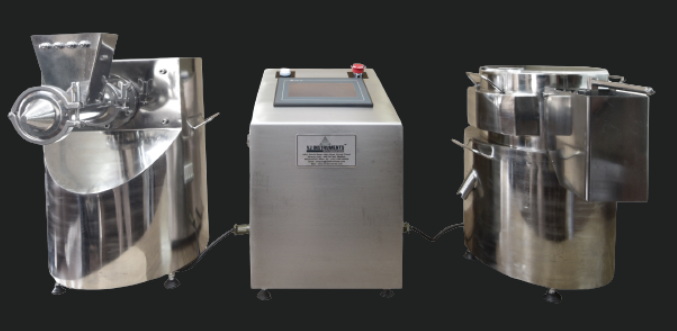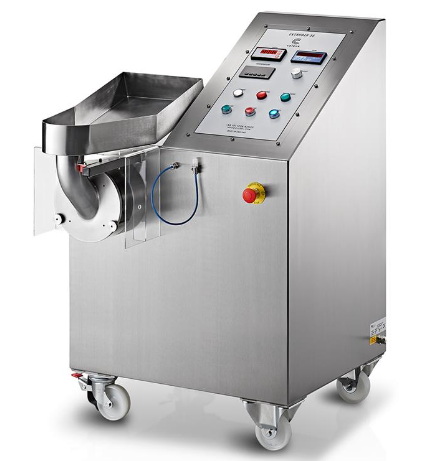Content Menu
● Introduction to Extrusion Spheronization
>> Mixing and Granulation
>> Extrusion
>> Spheronization
>> Drying and Coating
● Industries Using Extrusion Spheronization Equipment
>> Pharmaceutical Industry
>> Food and Beverage Industry
>> Chemical Industry
>> Cosmetic Industry
● Benefits of Extrusion Spheronization Equipment
● Challenges and Future Developments
● Operational Considerations
● Conclusion
● FAQ
>> 1. What is the primary purpose of extrusion spheronization equipment?
>> 2. Which industries commonly use extrusion spheronization equipment?
>> 3. What are the key steps in the extrusion spheronization process?
>> 4. What are the advantages of using extrusion spheronization equipment?
>> 5. What are some challenges associated with extrusion spheronization equipment?
Extrusion spheronization equipment is a crucial tool in various industries, primarily used for transforming powders or pastes into uniform, spherical pellets. This process involves several key steps: mixing, extrusion, spheronization, and drying/coating. The uniformity and controlled characteristics of the pellets produced make them ideal for applications requiring precise dosing and consistent performance. Below, we explore the industries that utilize extrusion spheronization equipment and delve into the specifics of how this technology benefits each sector.

Introduction to Extrusion Spheronization
Extrusion spheronization is a multi-step process that begins with mixing or granulation, followed by extrusion, spheronization, and finally, drying and possibly coating. This method is particularly effective for producing pellets with a narrow size distribution, which is essential for ensuring consistent performance in various applications.
Mixing and Granulation
The first step involves creating a homogenous wet mixture of the active ingredients and excipients. This is typically achieved using a high-shear granulator, which ensures that the mixture is uniform and has the necessary properties for extrusion. The granulation process can be tailored to achieve specific particle sizes and densities, which are critical for the subsequent steps.
Extrusion
The wet mass is then fed into an extruder, where it is forced through a die or screen to form cylindrical extrudates. The diameter of these extrudates determines the final size of the pellets. Extruders can be designed with different configurations to accommodate various materials and desired pellet sizes.
Spheronization
The extrudates are then placed in a spheronizer, which consists of a rotating friction plate. As the extrudates collide with the plate and each other, they are rounded into spherical pellets. The spheronization process is highly efficient in producing pellets with a uniform size and shape.
Drying and Coating
Finally, the pellets are dried to remove excess moisture and may undergo coating to enhance their properties or appearance. Coating can improve the stability of the pellets, enhance their release characteristics, or provide additional functionality such as taste masking.
Industries Using Extrusion Spheronization Equipment
Pharmaceutical Industry
In the pharmaceutical sector, extrusion spheronization is used to produce controlled-release formulations. These pellets can be used as standalone products or as components in tablets, capsules, or sachets. The uniform size and shape of the pellets ensure consistent drug release profiles, which is critical for maintaining therapeutic efficacy. Additionally, the high drug loading capacity of these pellets allows for more efficient dosing, improving patient compliance.
Food and Beverage Industry
In the food industry, extrusion spheronization is applied to create uniform pellets for snack foods, breakfast cereals, and pet foods. The process helps improve the texture and consistency of these products, making them more appealing to consumers. Uniform pellets also facilitate easier handling and packaging.
Chemical Industry
The chemical industry utilizes extrusion spheronization to produce granules for catalysts, fertilizers, and other chemical compounds. The uniformity of these pellets enhances their performance and handling. For catalysts, uniform size ensures consistent activity, while for fertilizers, it improves application efficiency.
Cosmetic Industry
Though less prominent, extrusion spheronization can also be applied in the cosmetic industry for producing uniform particles in skincare products, enhancing their texture and delivery. Uniform particles can improve the stability and efficacy of active ingredients in creams and lotions.

Benefits of Extrusion Spheronization Equipment
- Uniformity and Consistency: The pellets produced have a narrow size distribution, which is crucial for consistent performance in various applications.
- Controlled Release: In pharmaceuticals, these pellets can be formulated to release active ingredients over a prolonged period, improving drug efficacy.
- High Drug Loading: Extrusion spheronization allows for high concentrations of active pharmaceutical ingredients in small pellets, enhancing patient compliance.
- Low Friability: The pellets have low friability, meaning they maintain their shape during handling, which is important for maintaining therapeutic characteristics.
- Efficient Production: Once optimized, the process can be highly efficient, allowing for large-scale production with minimal waste.
Challenges and Future Developments
Despite its advantages, extrusion spheronization equipment comes with high capital costs and energy consumption. However, advancements in technology are aimed at improving efficiency and reducing operational expenses. Innovations in materials science and mechanical engineering are expected to enhance the performance and sustainability of extrusion spheronization processes.
Operational Considerations
When implementing extrusion spheronization equipment, several operational factors must be considered:
- Material Selection: The choice of materials affects the entire process, from granulation to final pellet properties.
- Process Optimization: Each step in the process must be optimized to achieve the desired pellet characteristics.
- Maintenance and Upkeep: Regular maintenance is crucial to ensure the longevity and efficiency of the equipment.
Conclusion
Extrusion spheronization equipment plays a vital role in industries requiring uniform, spherical pellets for consistent performance. Its applications span pharmaceuticals, food, chemicals, and potentially cosmetics. The benefits of this technology include uniformity, controlled release, high drug loading, and low friability. As technology evolves, we can expect more efficient and cost-effective solutions for industries relying on extrusion spheronization.

FAQ
1. What is the primary purpose of extrusion spheronization equipment?
Extrusion spheronization equipment is primarily used to transform powders or pastes into uniform, spherical pellets. This process is crucial for applications requiring precise dosing and consistent performance.
2. Which industries commonly use extrusion spheronization equipment?
Extrusion spheronization equipment is commonly used in the pharmaceutical, food and beverage, chemical, and potentially cosmetic industries.
3. What are the key steps in the extrusion spheronization process?
The key steps include mixing/granulation, extrusion, spheronization, and drying/coating.
4. What are the advantages of using extrusion spheronization equipment?
Advantages include uniform pellet size, controlled release formulations, high drug loading, low friability, and ease of coating.
5. What are some challenges associated with extrusion spheronization equipment?
Challenges include high capital costs and high energy consumption.













